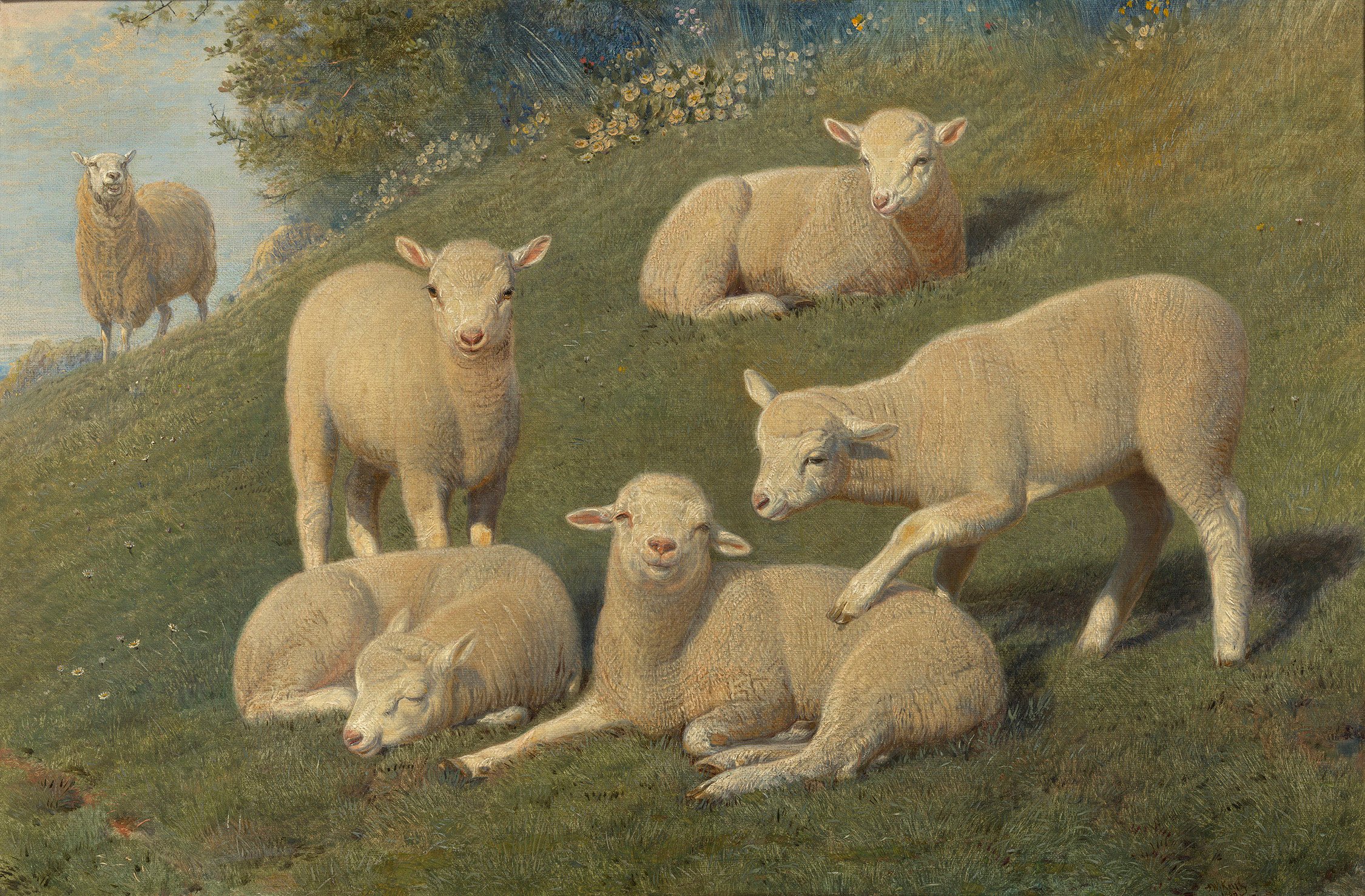
Easter in the Royal Collection
Explore Easter imagery in the Royal Collection
BEDFORD MASTER (ACTIVE C. EARLY 15TH CENTURY)
The Sobieski Hours
c. 1430-40Manuscript on vellum; miniatures, decorated initials and borders in bodycolour and gold leaf. 234 folios, numbered in pencil. | 28.6 x 19.7 x 6.5 cm (book measurement (conservation)) | RCIN 1142248
The Sobieski Hours©
Bound in red velvet, with gold foliate corner-pieces and clasps on fore-edge, gold oval plaque to centre with crowned JRP (Johannes Rex Poloniorum, John King of Poland) monogram.
This manuscript was written and illuminated c. 1430, initially in the workshop of the Master of the Bedford Hours. There were two other major illuminators responsible for the manuscript, the Fastolf Master (active 1440-50 in Rouen), and the Master of the Munich Golden Legend (active 1440-50 in northern France). The Bedford Master was responsible particularly for the miniatures introducing the life of the Virgin Mary in the Hours proper. One of his miniatures gives an indication of who the book of hours was created for. It depicts a lady who is probably Isabelle of Brittany, praying to St Margaret.
At the end of the seventeenth century, the manuscript belonged to Jan Sobieski, King of Poland, and by the marriage of his granddaughter Clementina to James Stuart, the Old Pretender, it passed into the Jacobite family. James was the son of James II, the king who was deposed in 1688. The younger son of James and Clementina, Henry Benedict, became a Cardinal, and was from 1788 acknowledged by Jacobite sympathisers as Henry IX, but by then there was no possibility of a successful uprising in his favour. After his death in 1807 and following his instructions, the manuscript was left to the Prince Regent. In 1814/15 after the establishment of peace on the continent, the manuscript finally arrived in England to form part of the Royal Collection.
Catalogue entry from Royal Treasures, A Golden Jubilee Celebration, London 2002, with additional information
This manuscript was written and illuminated c. 1430, initially in the workshop of the Master of the Bedford Hours. There were two other major illuminators responsible for the manuscript, the Fastolf Master (active 1440-50 in Rouen), and the Master of the Munich Golden Legend (active 1440-50 in northern France). The Bedford Master was responsible particularly for the miniatures introducing the life of the Virgin Mary in the Hours proper. One of his miniatures gives an indication of who the book of hours was created for. It depicts a lady who is probably Isabelle of Brittany, praying to St Margaret.
At the end of the seventeenth century, the manuscript belonged to Jan Sobieski, King of Poland, and by the marriage of his granddaughter Clementina to James Stuart, the Old Pretender, it passed into the Jacobite family. James was the son of James II, the king who was deposed in 1688. The younger son of James and Clementina, Henry Benedict, became a Cardinal, and was from 1788 acknowledged by Jacobite sympathisers as Henry IX, but by then there was no possibility of a successful uprising in his favour. After his death in 1807 and following his instructions, the manuscript was left to the Prince Regent. In 1814/15 after the establishment of peace on the continent, the manuscript finally arrived in England to form part of the Royal Collection.
Catalogue entry from Royal Treasures, A Golden Jubilee Celebration, London 2002, with additional information







